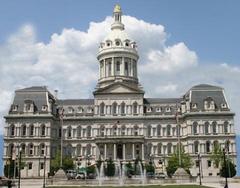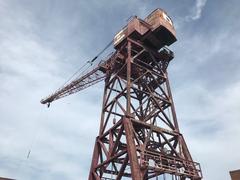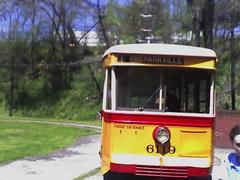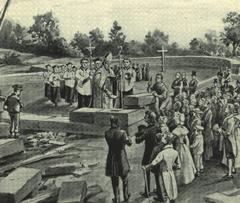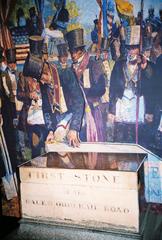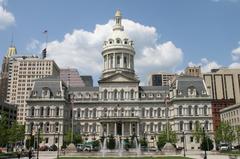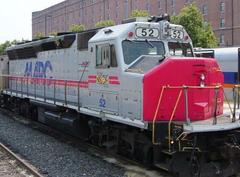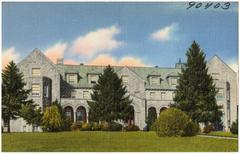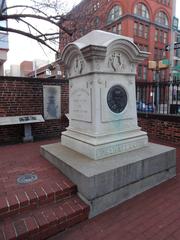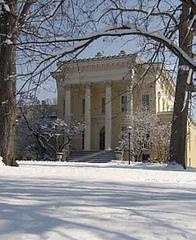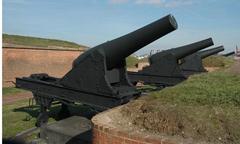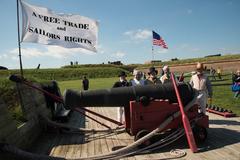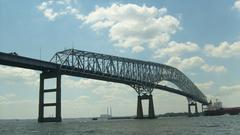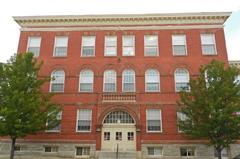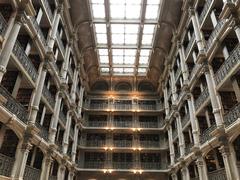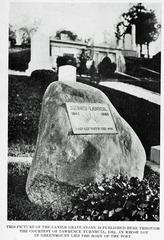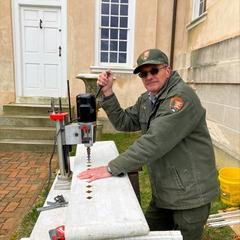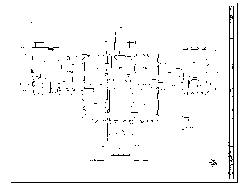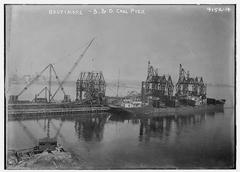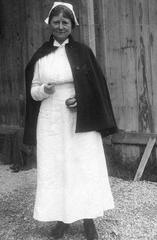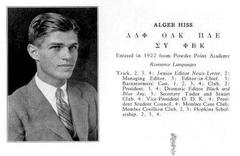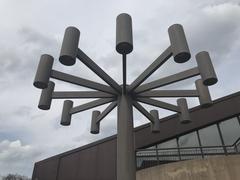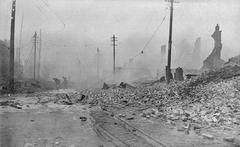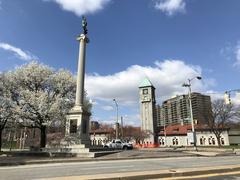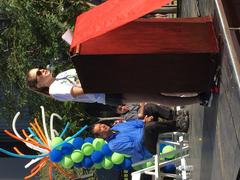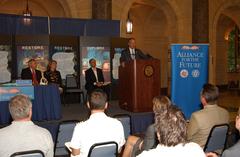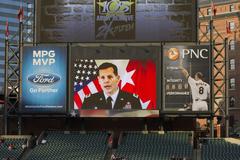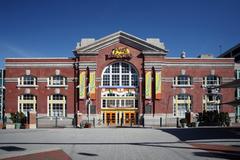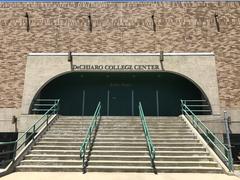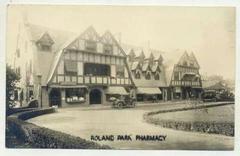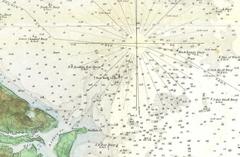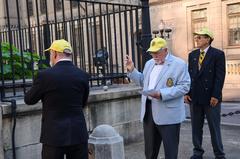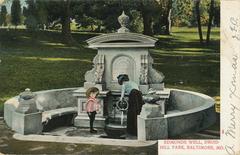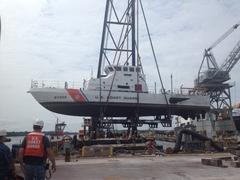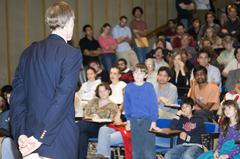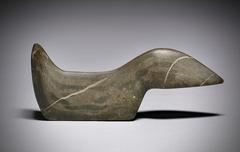Bohemian National Cemetery Baltimore: Visiting Hours, Tickets, and Travel Guide
Date: 04/07/2025
Introduction
Bohemian National Cemetery in Baltimore is a vibrant testament to the city’s Czech and Slovak immigrant heritage. Founded in 1884 by the Grand Lodge of the Česko Slovanská Podporující Společnost (ČSPS), the cemetery was established as a dignified burial ground for the growing Bohemian community, distinct from the predominantly Catholic cemeteries of the era. Today, it serves not only as a resting place for over 4,000 individuals—including notable figures like Congressional Medal of Honor recipient Sgt. William R. Jecelin—but also as a cultural center preserving traditions, language, and community identity (theclio.com, mzv.gov.cz).
With its Central European rural cemetery design, architectural landmarks, and annual cultural events, Bohemian National Cemetery appeals to history enthusiasts, genealogists, architecture lovers, and travelers interested in Baltimore’s diverse heritage.
Table of Contents
- Introduction
- Historical Background
- Architectural and Artistic Significance
- Memorialization and Community Memory
- Cultural Traditions and Modern Adaptation
- Visiting Information
- Notable Features and Landmarks
- Events and Community Engagement
- Nearby Attractions
- Visitor Etiquette and Accessibility
- Frequently Asked Questions (FAQ)
- Plan Your Visit
- Conclusion and Summary
- References
Historical Background
Founding and Community Origins
Established in 1884, Bohemian National Cemetery was created to meet the needs of Baltimore’s Czech immigrants, who sought a burial ground that reflected their secular traditions and cultural values. The Grand Lodge of ČSPS, a leading Bohemian fraternal organization, purchased land on Baltimore’s northeastern edge, providing a space where language, customs, and heritage could be preserved and celebrated (theclio.com, Bohemian National Cemetery - About).
Evolving Identity and Inclusivity
Initially reserved for those of Bohemian descent, the cemetery embraced inclusivity in 1887, opening its gates to all nationalities on a nonsectarian basis. Over time, it has become a symbol of both ethnic heritage and Baltimore’s broader immigrant history (Bohemian National Cemetery - About).
Architectural and Artistic Significance
The cemetery features a blend of Central European and American architectural styles. Notable highlights include:
- Gothic Revival Gatehouse (1893): A striking entrance that symbolizes the aspirations of early Czech settlers.
- Arts and Crafts Waiting Room (1907): Reflects the community’s appreciation for craftsmanship and comfort.
- Renaissance Revival Crematorium (1919): Decorated by John A. Mallin, this building emphasizes the site’s commitment to artistry and progressive burial practices.
- Classical Revival Office (1926): Adds architectural diversity to the grounds.
Landscape designers like John V. Benes and Jens Jensen incorporated both orderly urban grids and naturalistic curves, creating a setting that is both structured and serene. Artistic monuments—such as Albin Polasek’s bronze “The Pilgrim” statue—add layers of symbolism, representing themes of journey, mortality, and hope (Bohemian National Cemetery - About).
Memorialization and Community Memory
Bohemian National Cemetery is a repository of collective memory, honoring military veterans and community leaders. Monuments commemorate participants in the Civil War, Spanish-American War, and World Wars I and II. The cemetery played a significant role in the aftermath of the 1915 Eastland Disaster, providing a final resting place for many of its victims (Bohemian National Cemetery - About).
Cultural Traditions and Modern Adaptation
The cemetery is a hub for Czech and Slovak cultural events, including Memorial Day ceremonies, traditional picnics, and educational tours. Over time, it has adapted to serve Baltimore’s increasingly diverse population while maintaining its Czech and Slovak roots (cspslodge.wordpress.com).
Visiting Information
Location and Directions
- Address: 1300 Horners Lane, Armistead Gardens, East Baltimore, MD (Wikipedia, Trek Zone)
- Access: By car (on-site parking available). Public transportation options include bus stops on Pulaski Highway and Erdman Avenue.
Hours and Admission
- Open Daily: 8:00 AM – 5:00 PM (may vary seasonally; check official website for updates)
- Admission: Free; donations are welcome
Accessibility
- Main paths are unpaved and may be uneven, limiting accessibility for some visitors. Wheelchair access is available in primary areas; contact the cemetery office for specific needs (CSPS Lodge).
Notable Features and Landmarks
- Historic Gatehouse and Entrance
- Caretaker’s Cottage and Carriage House
- Columbarium and Ceremony Hall
- World Wars I and II Memorial (BNC Events)
- Bohemians of Baltimore Museum: Showcasing the history of Baltimore’s Czech community
- Family Plots and Czech-Inspired Monuments
For navigation, consider printing a map from Find a Grave.
Events and Community Engagement
- Memorial Day Observance: Annual ceremony with flag presentations and tributes (mzv.gov.cz)
- Spring and Fall Guided Tours: “Tour of the Tombstones” and themed walks (Friends of BNC)
- Cultural Picnics and Gatherings: Celebrating Czech heritage with food, music, and educational programming (CSPS Lodge)
Schedules may change—check the official events page for details.
Nearby Attractions
- Johns Hopkins University Homewood Campus
- Clifton Park
- Baltimore Museum of Art
- Baltimore Inner Harbor
These sites add value to your visit by offering additional historical and cultural experiences (Trek Zone).
Visitor Etiquette and Accessibility
- Remain respectful of monuments and grave sites
- Photography for personal use is allowed; professional shoots require permission (Find a Grave)
- Pets are not permitted, except service animals
- Facilities are limited—plan accordingly for water and restrooms
- For accessibility concerns, contact the office prior to your visit
Frequently Asked Questions (FAQ)
Q: What are the cemetery’s visiting hours?
A: 8:00 AM to 5:00 PM daily; check for seasonal changes.
Q: Is there an entrance fee?
A: No; admission is free. Donations are appreciated.
Q: Are guided tours available?
A: Yes, particularly during spring and fall events. Contact the office or visit the Friends of BNC for schedules.
Q: Is the cemetery wheelchair accessible?
A: Main areas are accessible, but some paths are unpaved or uneven.
Q: Can I take photographs?
A: Yes, personal photography is permitted. Professional photography requires permission.
Plan Your Visit
- Best Times: Spring and fall for weather and special events
- What to Bring: Comfortable shoes, water, camera, sun protection
- Genealogy: Office staff can assist with research (Find a Grave)
- Check Official Resources: Bohemian National Cemetery Official Website, CSPS Lodge
Enhance your visit with the Audiala app for audio tours and on-site information.
Conclusion and Summary
Bohemian National Cemetery is more than a historic burial ground; it is a living monument to the resilience, artistry, and community spirit of Baltimore’s Czech and Slovak immigrants. Its architectural diversity, rich cultural programming, and inclusive ethos make it a welcoming space for all visitors. Whether you are researching family history, attending a community event, or exploring Baltimore’s immigrant past, the cemetery offers a meaningful and serene experience. Download the Audiala app, consult official resources before your visit, and immerse yourself in this unique chapter of Baltimore’s heritage.
References
- theclio.com
- Bohemian National Cemetery - About
- Bohemian National Cemetery Official Site
- CSPS Lodge
- mzv.gov.cz
- Wikipedia
- Trek Zone
- Find a Grave
- Friends of Bohemian National Cemetery

